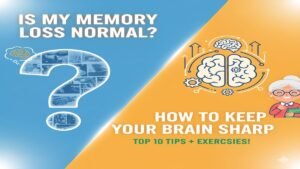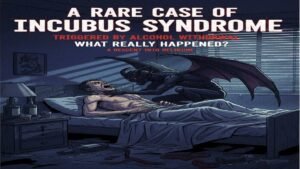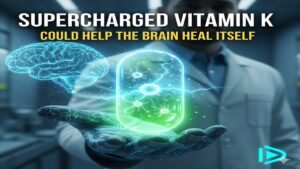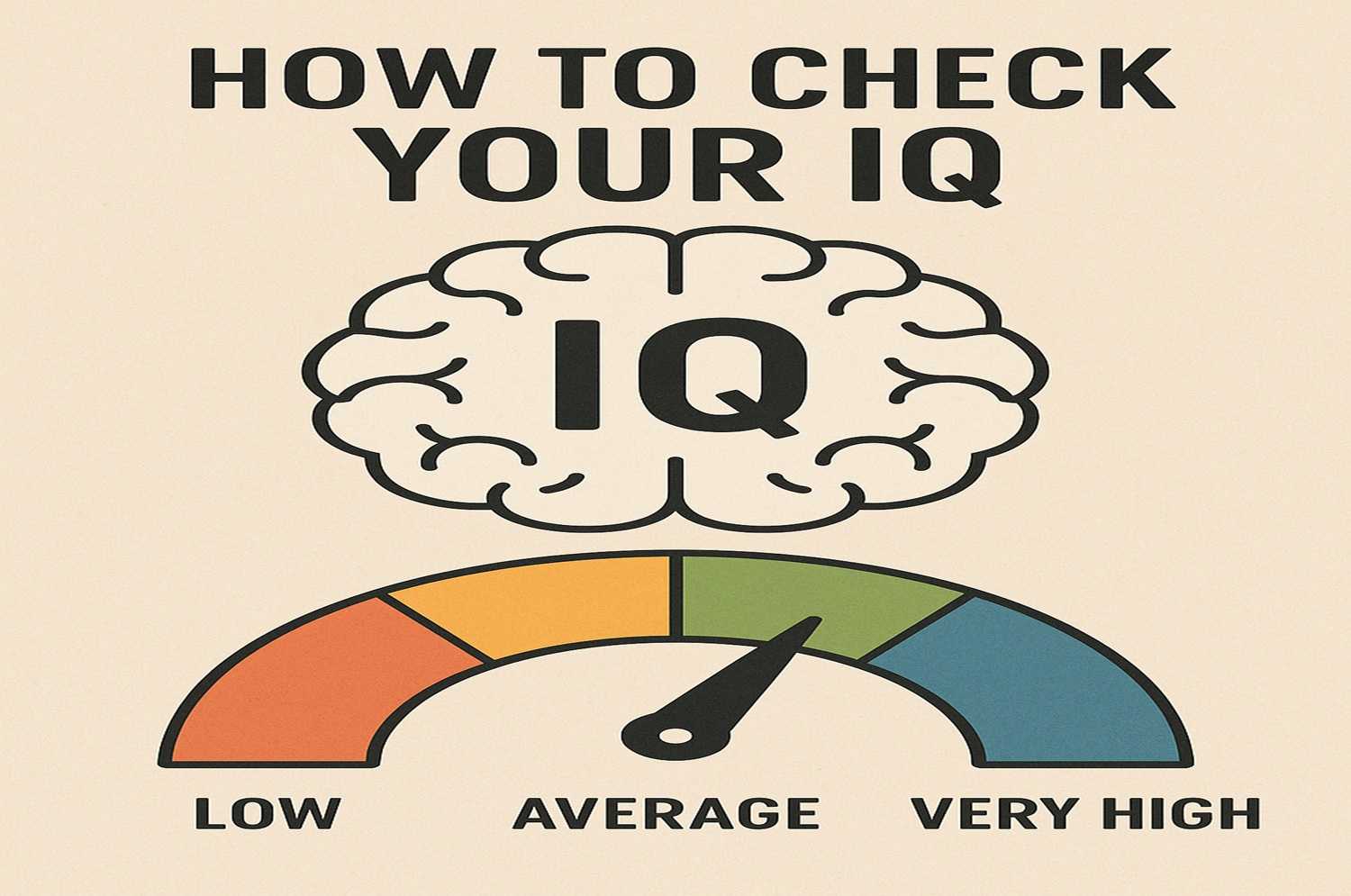Autism isn’t rare—yet it’s widely misunderstood. In this guide, we break down what Autism Spectrum Disorder (ASD) really means, signs to look out for, and practical ways to support loved ones on the spectrum.
Table of Contents
ToggleWhat Is Autism Spectrum Disorder (ASD)?
Definition in Simple Terms
Autism Spectrum Disorder (ASD) is a neurodevelopmental condition that affects how a person communicates, interacts socially, and processes sensory information. Think of it as a different way of experiencing the world—not a disease, but a difference in brain wiring. People with autism may have unique strengths and challenges, and the condition varies greatly from person to person—hence the word “spectrum”.
ASD is not caused by bad parenting, and it’s not something a person can “grow out of.” With support, individuals with autism can thrive and lead fulfilling lives.
Key Characteristics of Autism
Autism affects people in diverse ways, but some of the most common signs and characteristics include:
- Social Challenges: Difficulty understanding social cues, making eye contact, or forming relationships.
- Communication Differences: Delayed speech, repetitive language, or a preference for nonverbal communication.
- Repetitive Behaviors: Lining up toys, hand-flapping, or strict adherence to routines.
- Sensory Sensitivities: Over- or under-reaction to sounds, lights, textures, or smells.
- Focused Interests: Deep interest in specific topics, sometimes to the point of obsession.
These traits can range from mild to severe, and no two autistic individuals are exactly alike.
Difference Between Autism and Other Developmental Disorders
While autism shares some traits with other developmental disorders, there are clear differences:
| Aspect | Autism Spectrum Disorder (ASD) | Other Developmental Disorders |
|---|---|---|
| Social Interaction | Challenges with understanding social norms, cues, and relationships | May or may not have social difficulties |
| Communication | Often includes speech delays or unusual language use | Can include speech delay, but without repetitive speech |
| Repetitive Behavior | Strong emphasis on routines and repetitive actions | Less common or present in different forms |
| Onset & Diagnosis | Typically diagnosed by age 2–3, lifelong condition | Varies depending on the condition |
| Examples of Others | ADHD, Intellectual Disability, Global Developmental Delay | May overlap, but each has distinct diagnostic criteria |
In short, autism is unique in its combination of social, behavioral, and sensory features, setting it apart from other developmental conditions. However, it’s not uncommon for individuals to be diagnosed with both ASD and other disorders (a situation called comorbidity).
Common Signs and Symptoms of Autism
Autism Spectrum Disorder (ASD) affects individuals differently, but certain signs and symptoms are commonly observed. These may vary by age, developmental stage, and severity of the condition. Recognizing the signs early can help with timely support and intervention.
In Children
Children with autism may show signs as early as 12 to 18 months. While every child is unique, here are common early indicators:
- Delayed speech or language development
Many autistic children start talking later than peers or may not speak at all. - Limited eye contact
They may avoid or struggle to maintain eye contact with parents, peers, or strangers. - Lack of social interaction
They might not respond to their name, show limited interest in others, or avoid playing with peers. - Repetitive behaviors
Hand-flapping, rocking, spinning objects, or lining up toys are typical repetitive actions. - Unusual sensory responses
Either hypersensitive (e.g., distressed by loud sounds) or under-sensitive (e.g., doesn’t react to pain) to sensory input. - Strong attachment to routines
Resistance to change, such as distress when daily routines are interrupted, is common.
In Teenagers and Adults
In older individuals, the signs may evolve but are still recognizable:
- Difficulty with social relationships
Struggles with friendships, understanding sarcasm, or reading body language. - Communication challenges
May take things literally, have trouble maintaining conversations, or speak in a monotone voice. - Focused interests
Often have intense interests in specific topics and may prefer solitary activities. - Sensory sensitivities
Bright lights, certain fabrics, or specific sounds may trigger discomfort or anxiety. - Mental health issues
Co-occurring conditions such as anxiety, depression, or ADHD may be present. - Executive functioning difficulties
Challenges with planning, organizing, or switching between tasks.
Mild vs Severe Symptoms
Autism exists on a spectrum, meaning symptoms can range from subtle to highly noticeable:
- Mild Symptoms (High-Functioning Autism/Level 1 ASD):
These individuals may speak fluently and perform well in structured environments but still struggle with social cues or anxiety in unpredictable situations. - Severe Symptoms (Level 3 ASD):
Often includes nonverbal communication, significant cognitive delays, and high dependence on caregivers for daily activities.
Severity is not a fixed measure—it can change over time with the right therapies, support systems, and coping strategies.
What Causes Autism Spectrum Disorder?
Autism Spectrum Disorder (ASD) is a complex neurodevelopmental condition influenced by multiple factors. While there’s no single known cause, research points to a combination of genetic and environmental contributors. Understanding these factors helps debunk myths and fosters empathy for individuals on the spectrum.
Genetic Factors
Genetics play a significant role in the development of autism. Studies have shown that ASD tends to run in families, suggesting hereditary links. Specific gene mutations, such as changes in the SHANK3 or CHD8 genes, have been associated with increased autism risk. However, no single gene causes autism on its own—it’s usually a combination of many genes interacting in complex ways.
Twin studies further support the genetic component, with identical twins more likely to both have autism than fraternal twins. Yet, even with genetic predisposition, not all children develop ASD, indicating other factors are also involved.
Environmental Triggers
Environmental influences during pregnancy and early infancy can also affect brain development, potentially contributing to autism. Some researched factors include:
- Prenatal exposure to infections or toxins
- Advanced parental age
- Complications during birth or low birth weight
- Air pollution and exposure to heavy metals
These environmental triggers don’t cause autism directly but may interact with genetic susceptibility to influence brain development.
Debunking Myths (e.g., Vaccines)
One of the most persistent and harmful myths is the belief that vaccines cause autism. This myth originated from a now-discredited and retracted study published in 1998. Countless large-scale, peer-reviewed studies have since confirmed there is no scientific link between vaccines and autism.
Vaccines are safe, essential, and protect against serious illnesses. Spreading misinformation not only endangers public health but also diverts attention from the real needs of the autism community—early intervention, support services, and acceptance.
Diagnosis and Early Detection
How ASD Is Diagnosed
Autism Spectrum Disorder (ASD) is diagnosed through a comprehensive evaluation that involves multiple steps and professionals. There’s no single medical test, like a blood test, to diagnose autism. Instead, doctors rely on observations of behavior, developmental history, and standardized assessments.
The diagnostic process typically includes:
- Developmental screenings during routine check-ups
- Behavioral evaluations by specialists (e.g., child psychologists, neurologists)
- Input from parents, teachers, and caregivers
Common tools used in diagnosis include the Autism Diagnostic Observation Schedule (ADOS) and the Autism Diagnostic Interview-Revised (ADI-R). An early and accurate diagnosis is key to creating an effective support plan.
When to See a Specialist
It’s time to consult a specialist if you notice developmental delays or unusual behaviors in your child, especially in:
- Communication (e.g., delayed speech, limited eye contact)
- Social interaction (e.g., lack of interest in peers)
- Repetitive behaviors (e.g., hand-flapping, lining up toys)
Pediatricians may notice these signs during routine checkups and refer you to a developmental pediatrician, psychologist, or neurologist for further assessment. The earlier these evaluations happen, the better the outcome for the child.
Importance of Early Intervention
Early intervention is not just beneficial—it’s life-changing. Research shows that children who receive support before the age of 3 have better language, cognitive, and social skills later in life.
Key benefits of early intervention include:
- Improved communication and socialization
- Reduced behavioral issues
- Enhanced independence in daily activities
Programs like speech therapy, occupational therapy, and applied behavior analysis (ABA) can be tailored to meet a child’s individual needs. The sooner intervention starts, the more the child’s developing brain can adapt and grow.
How to Support Someone with Autism
Supporting someone with Autism Spectrum Disorder (ASD) requires patience, empathy, and a commitment to understanding their unique needs. Every individual on the spectrum is different, so personalized care and support make all the difference. Here’s how you can help:
Communication Tips
Clear, respectful, and consistent communication is key when interacting with someone with autism. Many individuals on the spectrum process language and social cues differently, so it’s essential to adapt your approach.
- Use clear and simple language: Avoid metaphors or idioms that may confuse.
- Be patient and give extra time: Let them process and respond at their own pace.
- Pay attention to non-verbal cues: Body language, facial expressions, or gestures can often say more than words.
- Respect their communication style: Whether they use speech, sign language, assistive devices, or prefer written communication—honor their preferences.
Empathetic listening and avoiding assumptions can build trust and create a safe space for connection.
Creating a Supportive Environment
A well-structured, predictable, and low-stress environment can greatly benefit someone with autism. It allows them to thrive without being overwhelmed.
- Establish routines: Predictability reduces anxiety and helps them feel secure.
- Minimize sensory overload: Adjust lighting, reduce noise, and avoid strong smells or textures that may cause discomfort.
- Respect their need for space: Alone time is often essential for self-regulation and emotional balance.
- Offer choices, not demands: This supports autonomy and reduces stress or resistance.
Even small changes in the environment can have a powerful impact on their daily comfort and wellbeing.
Do’s and Don’ts for Family and Friends
Your role as a family member or friend is vital. Here are some practical do’s and don’ts to help you be a supportive presence:
✅ Do’s:
- Educate yourself about autism. Understanding the condition reduces misconceptions.
- Celebrate their strengths. Many individuals with autism have incredible talents and passions.
- Encourage independence. Support them in trying new things and making their own decisions.
- Advocate when necessary. Be a voice in situations where they may face misunderstanding or exclusion.
❌ Don’ts:
- Don’t speak over or for them. Give them the opportunity to express themselves.
- Don’t take things personally. Their behavior may reflect stress, not rejection.
- Don’t force eye contact or touch. Respect their boundaries and comfort zones.
- Don’t assume what works for one person works for another. Autism is a spectrum for a reason.
Treatments and Therapies for ASD
Treating Autism Spectrum Disorder (ASD) isn’t a one-size-fits-all approach. Every individual on the spectrum has unique needs, strengths, and challenges. The key to effective management lies in early diagnosis, consistent support, and a tailored combination of therapies. Let’s explore the most commonly recommended and evidence-based treatments.
Behavioral Therapy
Behavioral therapy is often considered the foundation of ASD treatment. One of the most well-known approaches is Applied Behavior Analysis (ABA). This therapy focuses on improving specific behaviors such as communication, social skills, and learning through positive reinforcement.
Why it works:
- It breaks down complex skills into smaller, manageable steps.
- Reinforces positive behavior and reduces unwanted actions.
- Tailored plans help children and adults adapt to daily challenges.
Other behavioral therapies like DIR/Floortime and Pivotal Response Treatment (PRT) focus more on emotional connection and motivation, making them ideal for certain individuals.
Occupational & Speech Therapy
Occupational Therapy (OT) helps individuals with ASD develop independence in daily life. It targets fine motor skills, sensory integration issues, and routine tasks like dressing, eating, or writing.
Speech Therapy, on the other hand, addresses difficulties in both verbal and non-verbal communication. This includes:
- Teaching functional language and conversation skills.
- Improving clarity and sentence structure.
- Supporting the use of alternative communication tools (like PECS or speech devices) when needed.
Combined Impact: These therapies work best when started early and tailored to the individual’s developmental stage and specific challenges.
Medication (When Necessary)
While medication does not cure ASD, it can help manage certain symptoms that interfere with daily functioning. For example:
- Stimulants may be prescribed for attention difficulties.
- Antidepressants or anti-anxiety medications can support emotional regulation.
- Antipsychotic drugs might help reduce severe behavioral issues like aggression or self-harm.
Important Note: Medication should only be used under expert supervision, and it’s typically considered when therapy alone isn’t enough to improve quality of life.
Education and Social Skills Training
Children and adolescents with Autism Spectrum Disorder (ASD) thrive best when supported through personalized educational plans and targeted social training. A multi-faceted approach that includes school involvement, tailored curricula, and interactive group activities can significantly improve both academic and interpersonal development.
School Support Systems
Effective education for children with ASD begins with understanding and acceptance within the school environment. Schools that provide structured routines, sensory-friendly spaces, and trained staff create a positive learning atmosphere. Key support strategies include:
- Classroom accommodations like visual schedules, noise-reducing headphones, or quiet corners.
- Teacher training to help staff recognize ASD-related challenges and adapt instruction accordingly.
- Collaboration with parents and therapists, ensuring that educational goals are aligned at home and school.
These systems empower children with ASD to stay engaged, feel safe, and succeed academically.
IEPs and Inclusive Education
An Individualized Education Program (IEP) is a powerful tool that outlines a child’s specific learning needs, strengths, and goals. Developed collaboratively by educators, specialists, and families, an IEP ensures that a child receives customized support.
Inclusive education—where children with ASD learn alongside their neurotypical peers—promotes not only academic growth but also social integration. With the right support in place, inclusive classrooms can:
- Reduce stigma and encourage peer understanding.
- Improve communication and emotional skills through everyday interactions.
- Offer diverse learning experiences in a real-world social setting.
IEPs and inclusive education work hand-in-hand to foster a sense of belonging while respecting individual learning differences.
Social Skills Groups and Activities
Many children on the autism spectrum struggle with social cues, emotional regulation, and forming friendships. Structured social skills training programs—often led by therapists or special educators—help them build essential interpersonal abilities in a safe and guided environment.
These programs may include:
- Role-playing common scenarios like sharing, turn-taking, or handling teasing.
- Group games and storytelling, which promote teamwork and empathy.
- Peer mentoring or buddy systems, which encourage natural social interactions.
Participating in social skills groups not only improves communication but also boosts confidence and emotional resilience, equipping children with tools to better navigate the world around them.
Living With Autism: Success Stories & Everyday Wins
Living with autism isn’t just about managing challenges—it’s also about celebrating unique strengths, creative minds, and everyday victories. From public figures who’ve inspired millions to quiet wins in daily life, these stories show that people on the autism spectrum can and do lead rich, successful lives. Let’s explore some of these powerful narratives and how they shape a more inclusive world.
Famous People With Autism
Autism doesn’t hold back greatness—it can actually fuel it. Many well-known individuals have not only embraced their diagnosis but also used it to fuel their passions and talents.
- Temple Grandin – A world-renowned animal behaviorist and autism advocate, Temple has revolutionized livestock handling and spoken globally about her experiences.
- Satoshi Tajiri – The creator of Pokémon, Tajiri has publicly shared how his autism helped him think differently and create one of the most successful franchises in history.
- Dan Aykroyd – The actor and comedian has spoken openly about living with Asperger’s Syndrome, crediting it for his fascination with ghosts—one of the inspirations for Ghostbusters.
These stories highlight that autism is not a limitation but a different way of seeing the world—often with extraordinary results.
Real-Life Stories
Beyond the spotlight, countless everyday heroes live, work, and thrive with autism. Here are just a few real-life examples:
- Maya, Age 9 – Once nonverbal, Maya now writes short poems and stories, sharing her thoughts through beautiful written words. Her journey shows the power of patience and supportive therapy.
- Amit, Software Developer – Diagnosed in his teens, Amit found his niche in coding. His attention to detail and logical thinking made him a standout employee in a competitive tech firm.
- Priya, Café Owner – A young entrepreneur with autism in Mumbai, Priya started a sensory-friendly café where neurodivergent individuals feel welcome. She’s not just running a business—she’s building a community.
These everyday wins often go unnoticed, but they are incredibly powerful in breaking stereotypes and redefining what “success” means.
Promoting Neurodiversity in Society
We’re slowly moving toward a world where neurodiversity is recognized as a strength, not a challenge. But there’s still work to do.
- Inclusive Workplaces: Companies are beginning to see the value in hiring neurodivergent talent—offering roles tailored to strengths rather than forcing conformity.
- Education Reform: Schools are adapting with more sensory-friendly classrooms, tailored learning plans, and teacher training in autism awareness.
- Media Representation: Films, books, and shows are now portraying autistic characters more realistically and respectfully, helping reshape public perception.
Promoting neurodiversity isn’t about special treatment—it’s about equal opportunity. When we recognize and support all kinds of minds, everyone wins.
Read Also:
What Is Anxiety Disorder? Symptoms, Causes, and Treatments Explained
How to Meditate: Discover Powerful Meditate Benefits & Proven Meditation Benifits for Mind and Body
FAQ:
-
What is Autism Spectrum Disorder in simple terms?
A developmental condition affecting communication, behavior, and social skills in varying degrees.
-
How can I tell if my child has autism?
Watch for delayed speech, limited eye contact, repetitive behaviors, or difficulty with social interaction.
-
Can autism be cured?
Autism can’t be cured, but early therapy helps manage symptoms and improve quality of life.
-
What is the best age to diagnose autism?
Autism can be reliably diagnosed by age 2, though signs may appear even earlier.
-
How do I support a friend or family member with ASD?
Be patient, understanding, listen actively, respect their needs, and encourage their strengths and interests.









